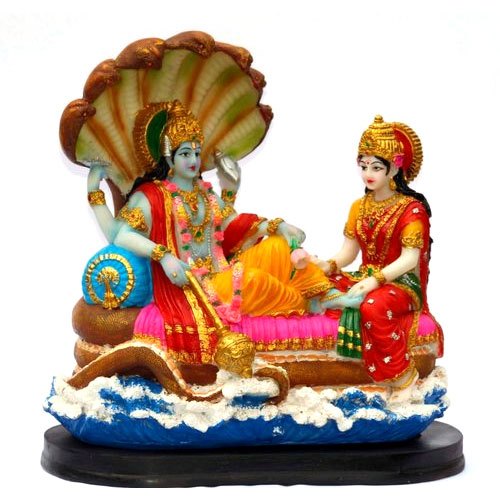In the previous episode, we had witnessed the commencement of the second “Amsa” of “Shri Vishnu Puraana”, and Sage Paraashara explains an important point before moving any forward. He explains the difference between us taking birth in this world, and Bhagawan taking birth in this world. Although the equation might seem the same outwardly, there is a gross difference in it. We take innumerable number of births in this world due to our “Karma” that we’ve accumulated over several births. However, when Bhagawan takes birth, it is not because of any “Karma”. In fact, Bhagawan Krishna Himself declares in the Bhagawad Gita that no “Karma” can even come close to Him or touch Him at any cost! Then we might have a question here – If “Karma” doesn’t touch Bhagawan, why should He take birth repeatedly? This is where, Bhagawan Krishna explains further in the Bhagawad Gita that He takes birth in this world voluntarily and with the ultimate desire of establishing “Dharma” in this world by destroying the “Adharma” that raises its head every now and then. Since, Bhagawan is taking birth in this world voluntarily and not because of “Karma”, we refer Bhagawan’s birth as an “Avatara” or “Incarnation”. We simply do not refer to this phenomenon by merely saying that Bhagawan is taking birth. We instead refer to this as a divine incarnation.
When we witness various incarnations of Bhagawan, we normally tend to associate this with the ten important “Avataras”, or, popularly known as the “Dasha-Avataras”. But is that all? Has Bhagawan incarnated in this world only ten times so far in the past four Yugas? (In fact, it should be nine, as Bhagawan Kalki is yet to incarnate!) The answer is “No”! Bhagawan Vishnu has incarnated an enormous number of times in this world. However, for our limited understanding and comprehension, we refer Bhaagwan’s incarnations as a set of ten “Avataras”. For instance, during our Ramayana project, we’ve witnessed a brief about Sage Kapilaachaarya. In that context, we’ve witnessed that Sage Kapilaachaarya is also an incarnation of Bhagawan Vishnu Himself. Thus, in similar lines, we have hundreds of Bhagawan’s divine incarnations in this world at different times. It is only for our comprehensive capability that we are condensing it into ten “Avataras”. Of the ten, the most prominent and important “Avataras” are those of Bhagawan Rama and Bhagawan Krishna. In these two “Avataras”, Bhagawan had not only established the “Dharma” in this world, but also, has served as a clear role model for all of us to lead our lives peacefully and in the spiritual path. Other “Avataras” were also prominent ones only, but many of those were instantaneous and momentous in nature. For instance, if we recall our discussion on the Narasimha Avatara, Bhagawan Narasimha appeared only at the last moment to kill Hiranya Kashibu. Similarly, Bhagawan Varaaha appeared only at the last moment to kill Hiranyaaksha. Bhagawan Vaamana appeared only for a few years, to neutralize King Mahabali. Whereas, if we look at Bhagawan Rama and Krishna, both these Avataras were “Poorna-Avataras”, wherein Bhagawan lived as a normal human being in this world for an entire lifespan. This enabled Bhagawan to illustrate all the important qualities and behavioral aspects that a human being should take care, while leading a life in this world.
With this note, Sage Kapilaachaarya is going to continue the discussion on the various “Avataras” of Bhagawan Vishnu. In fact, we’ve already witnessed in due course of our previous episodes, the first two important “Avataras” of “Varaaha” and “Narasimha”. Bhagawan Vishnu incarnated as Bhagawan Aadi Varaaha to protect the world from the wretched Raakshasa by name Hiranyaaksha. We’ve witnessed this in detail earlier and readers can recollect this by going through our earlier episodes. Similarly, we’ve discussed Bhagawan Vishnu’s incarnation as Bhagawan Narasimha (Half-human and half-lion) to protect little Prahlaada from the wretched hands of the Raakshasa, Hiranya Kashibu. We’ve witnessed a detailed accord on this too in our earlier episodes. So for today, let us understand these introductory points made by Sage Paraashara and we shall wait till the next episode to continue with this discussion further. Stay tuned! 🙂

